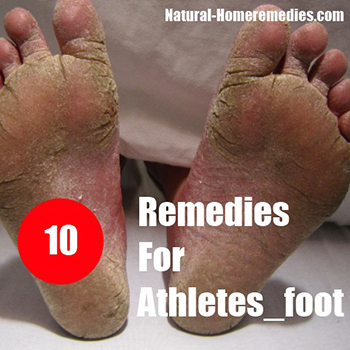
Symptoms of Athlete's Foot
A number of symptoms are associated with the problem of athlete's foot. The initial symptoms of this condition are dryness, itchiness and cracking of the skin of the feet. This will cause the affected individual to scratch the feet, which eventually results in blisters and peeling of the skin. In some cases, the infection may make the toe nails turn into a different colour and appear deteriorated. In cases when the affected individual begins to develop fever and swelling of the feet, it is advisable to seek medical help. If you suffer from diabetes, it is extremely important that you seek medical help from your doctor immediately to prevent the condition from worsening.
Causes of Athlete's Foot
Athlete's foot is known to be a condition that is similar to other fungal infections such as ringworm as well as jock itch. Dermatophytes, which are a cluster of mold-like fungi are known to be responsible for triggering these fungal infections. Under normal conditions, these microorganisms are present on the surface of the skin and are dormant. However, moisture is known to trigger these microorganisms, causing them to multiply. Wearing thick and tight shoes are known to be one of the major causes of athlete's foot. This is because these kinds of shoes compress the toes together, creating moisture between them, which results in multiplication of fungi on the surface of the skin. Plastic shoes are also considered to be favourable environments for developing fungal infections. Athletes foot is considered contagious and may spread as a result of coming in contact with contaminated objects such as infected shoes, towels or socks.
Home Remedies for Athlete's Foot
Calendula
 Calendula is an herb that is considered extremely effective in treating a host of health ailments, as it possesses anti-spasmodic, anti-inflammatory, anti-fungal and astringent properties. The anti-fungal properties of this herb make it an effective remedy for athlete's foot. The anti-inflammatory properties of calendula help in reducing the inflammation of the feet that is associated with athlete's foot. This herb is used extensively in the preparation of topical creams for fungal infections. You can either apply it topically or take it orally. Consult your physician before taking this herb orally.
Calendula is an herb that is considered extremely effective in treating a host of health ailments, as it possesses anti-spasmodic, anti-inflammatory, anti-fungal and astringent properties. The anti-fungal properties of this herb make it an effective remedy for athlete's foot. The anti-inflammatory properties of calendula help in reducing the inflammation of the feet that is associated with athlete's foot. This herb is used extensively in the preparation of topical creams for fungal infections. You can either apply it topically or take it orally. Consult your physician before taking this herb orally.
Garlic
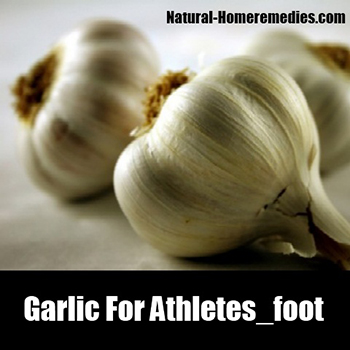 Garlic is an herb that is a part of the lily family and has been used extensively to treat a host of health ailments. Garlic is considered effective in the treatment of athlete's foot as it exhibits anti-fungal effects. In her book 'Herbal Medicine from the Heart of the Earth', health expert Dr. Sharol Tilgner states that garlic possesses anti-parasitic, anti-bacterial and anti-fungal properties, which help in destroying or inhibiting the growth of fungi. You can consume garlic in the form of tablets, capsules or in its whole form. Before using this herb, consult your doctor regarding the correct dosage.
Garlic is an herb that is a part of the lily family and has been used extensively to treat a host of health ailments. Garlic is considered effective in the treatment of athlete's foot as it exhibits anti-fungal effects. In her book 'Herbal Medicine from the Heart of the Earth', health expert Dr. Sharol Tilgner states that garlic possesses anti-parasitic, anti-bacterial and anti-fungal properties, which help in destroying or inhibiting the growth of fungi. You can consume garlic in the form of tablets, capsules or in its whole form. Before using this herb, consult your doctor regarding the correct dosage.
Oregon Grape Root
 Oregon grape root is an herb that is native to America's Pacific Northwest region and possesses a bitter taste with cooling properties. The root of this herb is considered extremely beneficial in the treatment of athlete's foot. Oregon root is known to possess anti-fungal and anti-microbial properties that help in destroying the fungi that are responsible for this condition.
Oregon grape root is an herb that is native to America's Pacific Northwest region and possesses a bitter taste with cooling properties. The root of this herb is considered extremely beneficial in the treatment of athlete's foot. Oregon root is known to possess anti-fungal and anti-microbial properties that help in destroying the fungi that are responsible for this condition.
Neem
 Neem is an herb that possesses antibacterial, antifungal, antiseptic, antiviral and anti-parasitic properties. The oil derived from the nut of this herb has been used for hundreds of years in India for medicinal purposes. This herb is considered a potent remedy for athlete's foot. You can apply neem to the affected area, two to three times each day. It will help in destroying the fungi that are responsible for triggering this infection. You can also consume this oil orally. However, it is extremely important that you take it under the supervision of your physician. Neem oil is also a common ingredient in soaps and creams, which can also be used to treat this condition.
Neem is an herb that possesses antibacterial, antifungal, antiseptic, antiviral and anti-parasitic properties. The oil derived from the nut of this herb has been used for hundreds of years in India for medicinal purposes. This herb is considered a potent remedy for athlete's foot. You can apply neem to the affected area, two to three times each day. It will help in destroying the fungi that are responsible for triggering this infection. You can also consume this oil orally. However, it is extremely important that you take it under the supervision of your physician. Neem oil is also a common ingredient in soaps and creams, which can also be used to treat this condition.
Lomatium
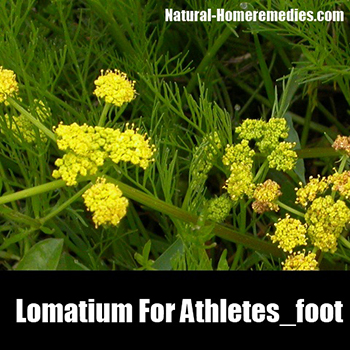 Lomatium is an herb that may prove effective in the treatment of athlete's foot. Lomatium is an herb that is a part of the parsley family and has been used extensively to treat viral infections, fungal infections as well as colds. Nutritional expert Dr.Sharol Tigner states that lomatium is an herb that possesses antiviral, antibacterial and antifungal properties. These properties make lomatium an effective remedy for treating athlete's foot. However, in some cases, oral consumption of this herb might result in the development of skin rashes.
Lomatium is an herb that may prove effective in the treatment of athlete's foot. Lomatium is an herb that is a part of the parsley family and has been used extensively to treat viral infections, fungal infections as well as colds. Nutritional expert Dr.Sharol Tigner states that lomatium is an herb that possesses antiviral, antibacterial and antifungal properties. These properties make lomatium an effective remedy for treating athlete's foot. However, in some cases, oral consumption of this herb might result in the development of skin rashes.
Turmeric
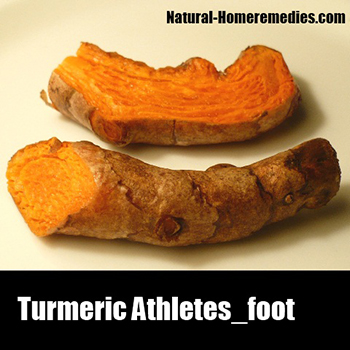 Turmeric is an herb that is used extensively in Indian cuisine to add flavour as well as colour to food. This herb is used to purify the blood as well as lower blood sugar levels. Turmeric is known to possess anti-inflammatory, anti-oxidant, antifungal and antiviral properties. This herb is considered effective in treating athlete's foot, when topically applied to the skin. You can also consume this herb orally by adding turmeric powder to your food or taking a capsule or tablet containing turmeric. You can prepare a bandage containing turmeric powder and apply it to the affected area. The only drawback of using this herb topically is that it leaves a yellow stain on the surface of the skin.
Turmeric is an herb that is used extensively in Indian cuisine to add flavour as well as colour to food. This herb is used to purify the blood as well as lower blood sugar levels. Turmeric is known to possess anti-inflammatory, anti-oxidant, antifungal and antiviral properties. This herb is considered effective in treating athlete's foot, when topically applied to the skin. You can also consume this herb orally by adding turmeric powder to your food or taking a capsule or tablet containing turmeric. You can prepare a bandage containing turmeric powder and apply it to the affected area. The only drawback of using this herb topically is that it leaves a yellow stain on the surface of the skin.
Tea Tree Oil
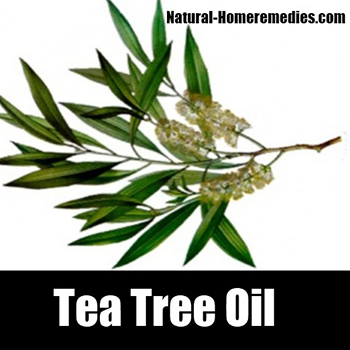 The Memorial Sloan-Kettering Cancer Centre (MSKCC) indicates that tea tree is an herb that is effective in treating fungal infections, inflammation, burns, cold sores, insect bites and eczema. Nutritional expert Dr. William A. Mitchell Jr. states that the oil derived from this herb is used topically as it is a potent fungicide. The MSKCC indicates that the topical application of this herb is extremely helpful in treating athlete's foot, also known as tinea pedis. To use tea tree oil for athlete's foot, it is recommended that you dilute tea tree oil in some carrier oil such as almond oil or coconut oil and apply it to the affected areas. It is highly recommended that you avoid the oral intake of this herb as it can have a toxic effect on the body.
The Memorial Sloan-Kettering Cancer Centre (MSKCC) indicates that tea tree is an herb that is effective in treating fungal infections, inflammation, burns, cold sores, insect bites and eczema. Nutritional expert Dr. William A. Mitchell Jr. states that the oil derived from this herb is used topically as it is a potent fungicide. The MSKCC indicates that the topical application of this herb is extremely helpful in treating athlete's foot, also known as tinea pedis. To use tea tree oil for athlete's foot, it is recommended that you dilute tea tree oil in some carrier oil such as almond oil or coconut oil and apply it to the affected areas. It is highly recommended that you avoid the oral intake of this herb as it can have a toxic effect on the body.
Rosemary
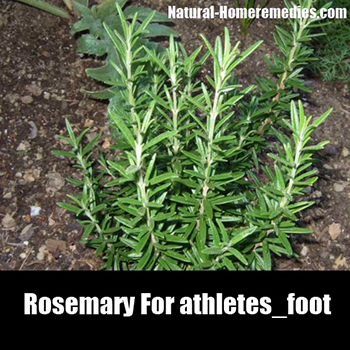 Rosemary is an herb that is often added to food as a preservative and it adds good flavour as well. Rosemary is also used to disinfect the air in hospitals. This herb is known to possess antifungal, antiseptic, anti-parasitic and antifungal properties, thereby making this herb an effective remedy for athlete's foot. To use rosemary oil in treating athlete's foot, dilute some rosemary oil in some carrier oil and apply it to the affected area.
Rosemary is an herb that is often added to food as a preservative and it adds good flavour as well. Rosemary is also used to disinfect the air in hospitals. This herb is known to possess antifungal, antiseptic, anti-parasitic and antifungal properties, thereby making this herb an effective remedy for athlete's foot. To use rosemary oil in treating athlete's foot, dilute some rosemary oil in some carrier oil and apply it to the affected area.
Coconut Essential Oil
 OrganicFacts.com states that coconut essential oil is known to possess lauric acid, which exhibits anti-fungal and anti-microbial properties. According to a research study conducted by the National Institute of Health, it was pointed out that coconut essential oil is helpful in combatting fungus candida or yeast. The Bureau of Agricultural Research also states that coconut essential oil possesses many medicinal properties that help in treating fungal problems. The anti-fungal properties of coconut essential oil help in destroying the fungi that are responsible for athlete's foot. To treat athlete's foot using coconut essential oil, apply some coconut essential oil to the affected area and leave it there for a few hours.
OrganicFacts.com states that coconut essential oil is known to possess lauric acid, which exhibits anti-fungal and anti-microbial properties. According to a research study conducted by the National Institute of Health, it was pointed out that coconut essential oil is helpful in combatting fungus candida or yeast. The Bureau of Agricultural Research also states that coconut essential oil possesses many medicinal properties that help in treating fungal problems. The anti-fungal properties of coconut essential oil help in destroying the fungi that are responsible for athlete's foot. To treat athlete's foot using coconut essential oil, apply some coconut essential oil to the affected area and leave it there for a few hours.
Lemongrass Oil
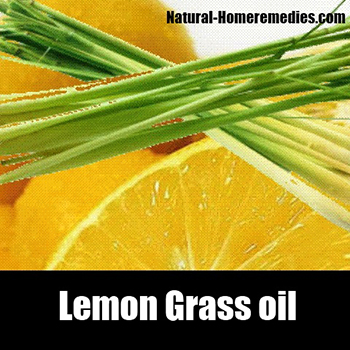 Lemongrass oil is known to possess antifungal properties that make it effective in the treatment of athlete's foot. OrganicFacts.net states that lemongrass essential oil possesses analgesic properties that help in easing the pain associated with irritated skin. Athlete's foot is associated with the development of a fungal infection along with inflammation and pain around the affected area, therefore, using this oil might prove to be helpful in decreasing pain as well as killing the fungi. The active ingredients that are responsible for these medicinal properties of lemongrass oil are myrcene, limonene, citronella and citral. This essential oil can be applied topically to the affected area to treat this condition effectively.
Lemongrass oil is known to possess antifungal properties that make it effective in the treatment of athlete's foot. OrganicFacts.net states that lemongrass essential oil possesses analgesic properties that help in easing the pain associated with irritated skin. Athlete's foot is associated with the development of a fungal infection along with inflammation and pain around the affected area, therefore, using this oil might prove to be helpful in decreasing pain as well as killing the fungi. The active ingredients that are responsible for these medicinal properties of lemongrass oil are myrcene, limonene, citronella and citral. This essential oil can be applied topically to the affected area to treat this condition effectively.
Other Home Remedies for Athletes Foot
- To treat athlete's foot, soak your feet in tub containing one part vinegar to four parts warm water. Keep your feet soaked for around 25-40 minutes twice each day.
- Baking soda is another effective remedy for athlete's foot. Add a teaspoon of baking soda to some water and mix until it forms a thick paste. Apply this paste to the affected area and wash off after around 45-60 minutes.
- Tea tree oil has been used extensively for treating athlete's foot. Soak your feet in a tub containing around 1.5 litres of water along with 50-60 drops of tea tree oil. It is extremely important to dry your feet thoroughly to prevent any moisture in between the toes.
- Apply some corn starch to your feet and leave it there for a few hours. This helps in removing the moisture from the feet, thereby promoting quick recovery from this condition.
- You can dissolve around 3-4 aspirins in 1/3 cup of rubbing alcohol and apply it to the affected area. Apply this mixture to the affected area two-three times each day and continue using this mixture until this condition is completely cured.
- You can also make a paste from fresh garlic and apply it to the affected areas. This will help in reducing the inflammation, pain as well as destroy the fungi responsible for the development of this condition.
- Soak your feet in a tub containing one part of apple cider vinegar and the same amount of warm water. Keep your feet soaked for at least 30 minutes. Dry your feet with a towel thoroughly to prevent the accumulation of moisture between the toes.
- Boric acid, vinegar and Epsom salt are known to be helpful in destroying the fungi responsible for athlete's foot. Soak your feet in a solution containing one cup of vinegar, ¼ cup Epsom salt and 4 teaspoons of boric acid. Keep your feet soaked in this solution for at least 20 minutes.
Diet for Athletes foot
Fruits and Vegetables
Fruits and vegetables are known to be excellent sources of antioxidants such as vitamin A and C. Vitamin C is considered helpful in boosting the immune system, which is helpful in increasing the ability of the body to fight fungal infections. Fruits and vegetables that contain high amounts of vitamin C include citrus fruits, brussels sprouts, green leafy vegetables, bell peppers, winter squash, kiwi and tomatoes.
Grains
In her book 'Raw Food Life Force Energy: Enter a Totally New Stratosphere of Weight Loss, Beauty and Health', health expert Natalia Rose states that a diet rich in grains, alcohol and starch is known to increase the risk of developing fungal infections. To treat athlete's foot, it is highly recommended that you avoid consuming refined grains as they can worsen the symptoms of this condition. Replace refined grains with whole grains such as oats, quinoa and wheat as they may help in reducing the growth of fungi.
Add Spices to your food
Health expert Gerald Don Wootan states that including spices such as cayenne pepper, cinnamon, coriander and cloves to your diet may prove helpful in detoxifying your body from fungus. These spices are known to possess antioxidant properties that make it useful in boosting immunity, thereby promoting speedy recovery from the fungal infection. These spices also exhibit antimicrobial and antifungal properties that help in treating athlete's foot effectively. However, it is advisable that you do not add too much of these spices to your food as they can trigger acid reflux, stomach upset and nausea.
Avoid Sweets
Health expert and author of the television program 'Know The Cause', Doug Kaufmann states that fungi can enter the body through several mediums such as air, skin or even the food you eat. Once they enter inside the body, they increase by the intake of certain foods. He also states that sugar is known to cause the multiplication of fungi in the body. This may result in the worsening of fungal infections such as athlete's foot. Avoid the consumption of refined sugars and aim at consuming enough fruits in your diet as they contain natural sugars that do not worsen this condition.
Use Olive Oil
Olive oil is known to be a good source of omega 3 fatty acids and help in the treatment of fungal infections such as athlete's foot. Foodscout.org states that olives are known to possess antifungal polyphenol compounds. These antifungal polyphenol compounds help in destroying the fungi that cause athlete's foot.
Athlete's Foot Prevention
Athlete's foot can easily by prevented by following certain hygienic habits. It is important to keep drying the feet from time to time as it helps in preventing the build-up of moisture, which is a major cause of athlete's foot. Walk around the house without socks or shoes as much as possible, to air your feet out thoroughly. If you wear socks, it is recommended that you wear socks made from cotton or wool, as they are natural materials and help in reducing moisture from the feet. If you sweat excessively, change your socks at least two times each day. Keep alternating the shoes that you wear as it gives the shoes enough time to air out. It is extremely important that you do not share shoes with anyone else, as this condition is contagious. You should also make use of an antifungal powder daily as it prevents the occurrence of fungal infections.
Other Treatment Options for Athlete's Foot
Oral Medications
Oral medications such as itraconazole (Sporanox), terbinafine (Lamisil) and fluconazole (Diflucan) are considered effective in treating athlete's foot. However, it is important to note that there are certain side effects associated with using these medications and they include stomach upset, abnormal functioning of the liver and body rash. Therefore, it is important to consume them only under the guidance of a physician. If you begin to experience any of these side effects, it is recommended that you seek medical help immediately.
Vitamins
According to a report published on the Science Daily website, it was stated that vitamin B3 may help in inhibiting the enzymes that are responsible for the growth of fungi. Vitamin B3, also known as niacin, is a water-soluble vitamin that is found in many foods such as eggs, dairy, legumes, lean meats or fish. You can also consume vitamin B3 in the form of a supplement to treat athlete's foot. However, it is important to note that taking high doses of this vitamin may result in the occurrence of side effects such as stomach ulcers, liver damage and increased blood sugar. Vitamin C is also considered effective in the treatment of athlete's foot. Health expert Phyllis Balch states that consuming 5,000 to 20,000 mg of this vitamin, dividing it in two doses, may help in boosting the immune system to fight fungal infections. Foods that contain vitamin C include green peppers, tomatoes, berries, cantaloupes and citrus fruits. High doses of this vitamin may result in stomach upset, diarrhoea, vomiting and nausea. Therefore, it is advisable that you seek advice from your physician regarding the correct dosage of this vitamin.
